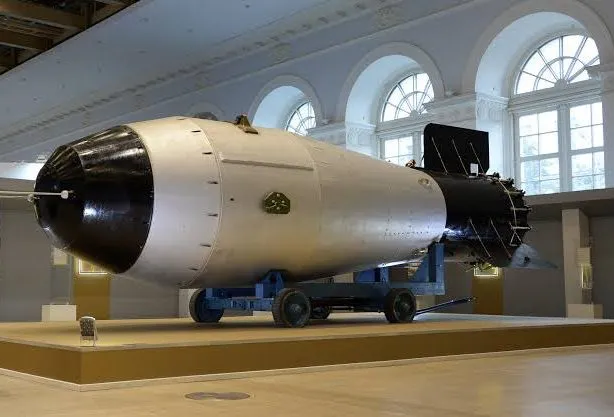New Delhi, June 16: The world is edging toward a new and more dangerous nuclear arms race, the Stockholm International Peace Research Institute (SIPRI), one of the most credible, independent international institute dedicated to research into conflict, armaments, arms control and disarmament has warned in its Yearbook 2025, released this week.
In an introduction to the annual publication, SIPRI Director Dan Smith says that the framework for nuclear arms control is crumbling, and with it, the fragile restraints on the expansion and modernization of nuclear arsenals. “The signs are that a new arms race is gearing up that carries much more risk and uncertainty than the last one,” he cautions.
India, meanwhile, continues to advance its nuclear capabilities. SIPRI estimates that India modestly expanded its nuclear arsenal in 2024 and is developing a range of new delivery systems. Among them are ‘canisterized’ missiles, which allow for quicker deployment by carrying warheads in a ready-to-launch format, potentially even during peacetime.
SIPRI states that these systems may eventually be able to carry multiple warheads, further enhancing India’s strategic posture. The development aligns with a regional trend: Pakistan is also expanding its capabilities, and tensions between the two countries briefly erupted into armed conflict in early 2025.
According to SIPRI’s Matt Korda, “the combination of strikes on nuclear-related military infrastructure and third-party disinformation risked turning a conventional conflict into a nuclear crisis.”
The SIPRI Yearbook 2025 presents a grim overview of global nuclear trends. Of the estimated 12,241 nuclear warheads in existence at the start of the year, around 9614 are in military stockpiles for potential use, and 3912 are deployed with missiles and aircraft. Around 2100 of these are on high operational alert, mostly in the hands of the United States and Russia.
“The era of reductions in the number of nuclear weapons in the world, which had lasted since the end of the cold war, is coming to an end,” notes Hans M. Kristensen, a senior fellow at SIPRI and Director of the Nuclear Information Project at the Federation of American Scientists. Instead, he says, the world is witnessing growing stockpiles, aggressive modernization efforts, and deteriorating arms control mechanisms.
China is the fastest-growing nuclear power, now believed to have over 600 warheads and rapidly building hundreds of new intercontinental ballistic missile (ICBM) silos. By 2035, it could possess as many as 1500 warheads, still far fewer than the U.S. or Russia, but enough to alter strategic calculations globally. Beijing’s arsenal expansion, according to U.S. officials, is one reason Washington is under pressure to include China in any future arms control negotiations. However, no such talks are currently underway.
While Russia and the United States maintain about 90 percent of the world’s nuclear stockpiles, bilateral nuclear arms control is in tatters. The New START treaty, the last major agreement limiting their arsenals, is set to expire in 2026. Dan Smith observes that “there are no signs of negotiations to renew or replace it, or that either side wants to do so.” U.S. President Donald Trump insists any new treaty must include China.
Technological advances are accelerating instability. SIPRI warns that new tools ranging from artificial intelligence (AI) and cyber operations to space-based sensors, missile defences, and quantum technologies, are reshaping deterrence and crisis dynamics. As Smith notes, “AI and other technologies speed up decision making in crises, [so] there is a higher risk of a nuclear conflict breaking out as a result of miscommunication, misunderstanding or technical accident.”
Traditional arms control frameworks, which rely on numerical limits, may no longer be adequate in this rapidly evolving landscape.
Beyond the nine nuclear-armed states—the U.S., Russia, the UK, France, China, India, Pakistan, North Korea, and Israel—SIPRI year book sees growing interest among other nations.
In Europe, East Asia, and the Middle East, national debates have intensified around nuclear weapons development and hosting. Belarus continues to claim that Russian nuclear arms are now stationed on its territory. Some NATO countries have expressed willingness to host U.S. weapons. French President Emmanuel Macron has revived calls for a “European dimension” to France’s nuclear deterrent.
The risks are not merely theoretical. As Korda notes, nuclear weapons “do not prevent conflict” and may even increase dangers. “They also come with immense risks of escalation and catastrophic miscalculation, particularly when disinformation is rife, and may end up making a country’s population less safe, not more.”
North Korea, for its part, continues to expand its nuclear programme, with around 50 warheads already assembled and material for 40 more, according to SIPRI. South Korean intelligence believes Pyongyang is close to deploying a tactical nuclear weapon. In Israel, which maintains ambiguity about its arsenal, testing activity at missile sites and reactor upgrades suggest continued modernization.
Even in countries with mature arsenals, modernization is both extensive and expensive. The United States faces delays and cost overruns in replacing its strategic systems, while Russia’s programme has suffered from failed missile tests and slower-than-expected upgrades. Still, both powers are poised to expand deployed warheads once treaty constraints lapse.
India’s growing capabilities reflect the shifting centre of nuclear gravity to Asia. As SIPRI notes, the South Asian region remains one of the most volatile nuclear flashpoints. The brief hostilities between India and Pakistan earlier this year, though contained, highlighted the thin line between conventional and nuclear conflict.
With the architecture of arms control fraying and global security deteriorating, compounded by the wars in Ukraine, Gaza, and elsewhere, the SIPRI Yearbook 2025 delivers a stark message: the world is entering an era of growing nuclear danger, with fewer guardrails than ever before.







